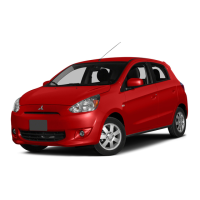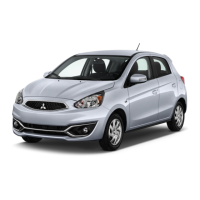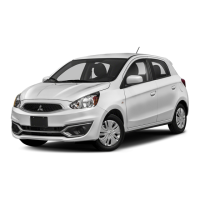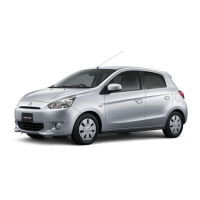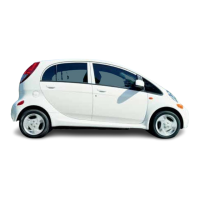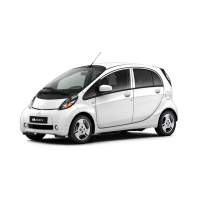WHEEL AND TIRE DIAGNOSIS
TSB Revision
WHEEL AND TIRE
31-10
<Confirming Proper Balance>
1. After balancing the wheel, loosen the wing nut
and turn the wheel 180 degree angle against the
balancer's hub. Then re-tighten the wing nut and
check the balance again. Repeat wheel balance if
necessary.
2. Turn the wheel again 180 degree angle against
the balancer's hub. If the wheel becomes
out-of-balance each time it is turned against the
balancer's hub, the wheel balancer may require
calibration.
<Wheel Balancer Calibration Checks>
1. Mount an undamaged original-equipment alloy
rim and tire assembly (wheel) onto your
off-the-car wheel balancer. Balance the wheel.
2. <<Zero Calibration Check>>
Loosen the balancer wing nut, rotate the wheel a
half-turn (180 degree angle), and retighten the
nut. Recheck the balance.
If the imbalance is 5 g (0.18 ounce) or less, the
zero calibration is OK. Rebalance the wheel, then
go to Step 4 to check static balance.
If the imbalance is more than 5 g (0.18 ounce), go
to Step 3.
3. Loosen the balancer wing nut, rotate the wheel
1/4 turn (90 degree angle), and retighten the nut.
Recheck the wheel balance.
If the imbalance is 5 g (0.18 ounce) or less, the
wheel may not be centered on the balancer, or
the balancing cones, the cup, and/or wing nut are
damaged, dirty, or inappropriate for the wheel.
You may need to refer to the balancer manufac
-
turer's instructions to verify the correct attach-
ments. After making the necessary corrections,
recheck the wheel balance. If OK, then go to Step
4.
If the imbalance is more than 5 g (0.18 ounce),
the balancer requires calibration. Contact the bal
-
ancer manufacturer for calibration by their repair
representative.
4. <<Static Balance Check>>
Attach a 5 g (0.18 ounce) weight to the outer rim.
Recheck the balancer. The balancer should
detect 5
2 g (0.18 0.06 ounce) of imbalance
170 to 190 degree angle away from the 5 g (0.18
ounce) weight.
If the imbalance is within specification, the static
balance calibration is correct. Go to Step 5 to
check the dynamic balance.
If the imbalance is out of specification, the bal-
ancer requires calibration. Contact the balancer
manufacturer for calibration by their repair repre
-
sentative.
5. <<Dynamic Balance Check>>
Attach a 5 g (0.18 ounce) weight to the inner rim
at 180 degree angle opposite the 5 g (0.18 ounce)
weight that was added in Step 4. Recheck the
balance. The balancer should detect 5
2 g (0.18
0.06 ounce) of imbalance 170 to 190 degree
angle away from both the inner and outer 5 g
(0.18 ounce) weights.
If the imbalance is within specification, the
dynamic balance calibration is correct. The bal
-
ancer calibration checks are complete.
If the imbalance is out of specification, the bal-
ancer requires calibration. Contact the balancer
manufacturer for calibration by their repair repre
-
sentative.
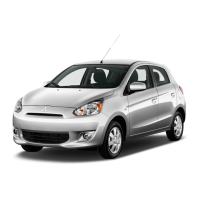
